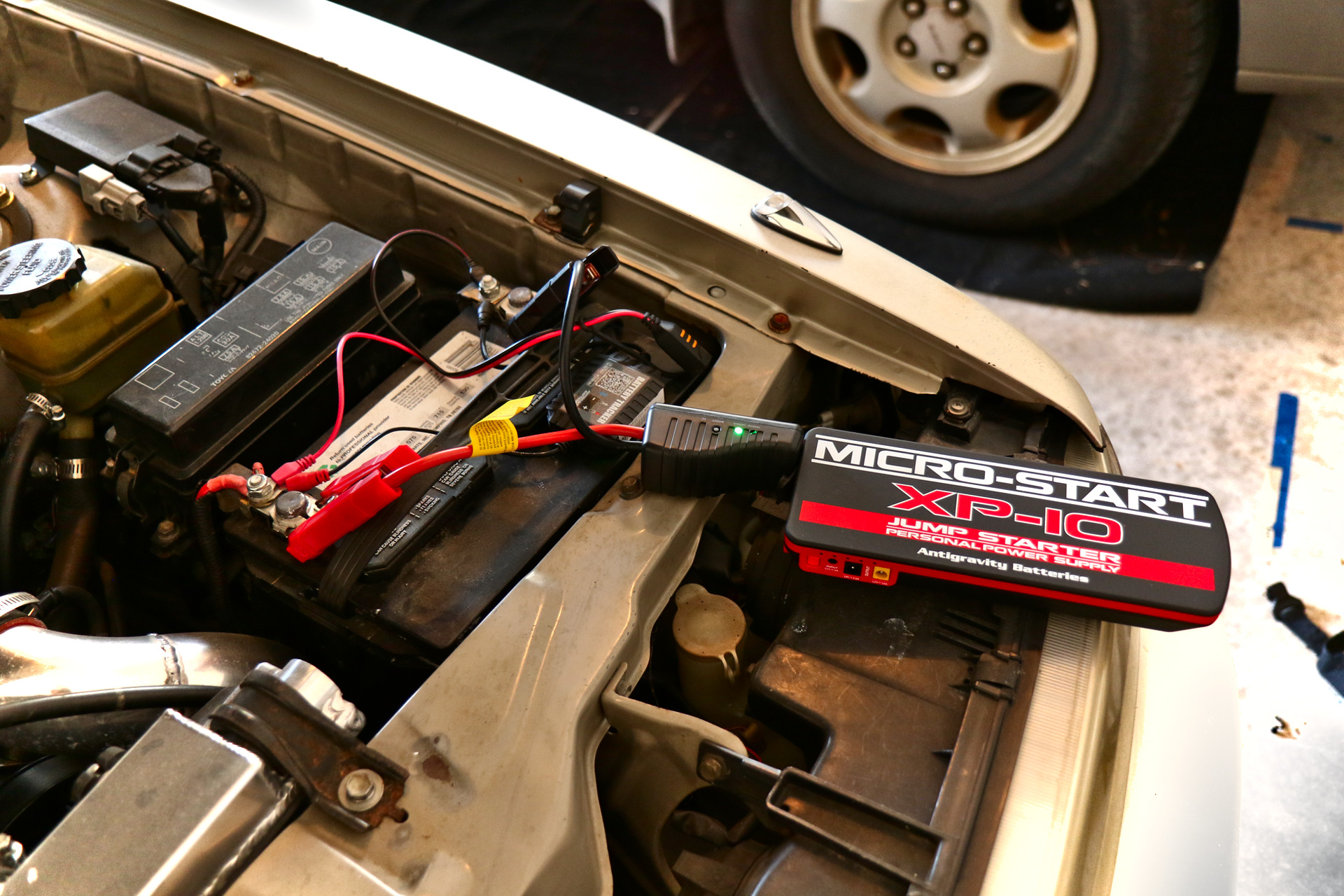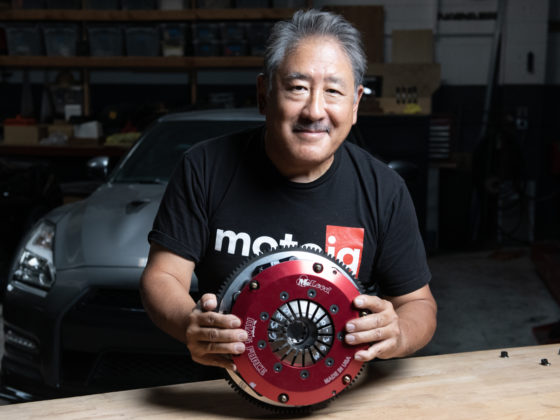
In case you don’t anal-retentively keep the instruction booklet in the binder with the rest of the MICRO-START accessories, the battery cable attachment has the instructions printed on the bottom. You connect the cable assembly to the battery, then plug it into the XP-10, and then try to start the car. It seems easy enough… maybe.

The instructions say that if the green LED does not come on or blink, and if the red polarity-reverse indicator does not come on, that you can hit the tiny little BOOST button because you’re a dummy and totally killed the battery. There are some other warnings about something something and 30 seconds or whatever but just start the car already, dummy.
It would be an extra-tortuous test because this engine hasn’t turned over in six or so months, it was about 40F outside, and the XP-10 MICRO-START was not fully charged.
The verdict?
It passed the test with flying colors. The car sure didn’t crank amazingly well, but it kept turning over for several seconds and fired right up. Success!

I was pretty surprised to see that the charge level had only dropped one LED (which the manual says is about 60%). Then I read the manual more, and the FAQ says that a fully-charged XP-10 can start a modern V8 FORTY-FIVE TIMES. I guess that I didn’t have to worry about a partially charged MICRO-START after all.
The Antigravity Batteries XP-10 MICRO-START jump starter is definitely going to live in my daily driver from now on, and that old thing is going to go into some other car I don’t mind getting stranded in…




9 comments
I recently bought a lithium battery jump start pack from a different brand, and man! Why did I wait so long to own one of these? So convenient, compact, and perfectly purpose built. No longer do I have to carry the bulky bundle of jumper cables.
I don’t know that I’d forever get rid of jumper cables. They have other uses. But, yes, this thing will definitely get you out of a jam!
This makes me wonder if you can install a undersized battery into a dedicated racecar and start it with the Lithium battery. Assuming the car is trailered to the track, of course.
Yes and No on the undersized battery question. If you are running an efficient system without a ton of power draw, Yes it can work. The No is that very undersized batteries do not have the capacity in some case you may want it, like if your alternator fails.
Most times we recommend a true 40AH lithium automotive batteries for race cars that are running electric power steering , chill out systems and higher draw electronics.
To back up what Bart (who works for Antigravity) says with another tidbit — do you really want to use a jump-box every time you start the car? Also, what happens if you spin the car on the track and end up stalling it? You wouldn’t be able to re-start it. Or what if you are in a race with a standing start and stall?
There’s CCA (cranking amps) and then total storage capacity in amp-hours. You likely want at least a few starts worth of storage capacity with sufficient CCA to actually turn over your motor.
Drag racing cars often don’t use an alternator but run a big enough battery to be able to start the car several times and run all the electronics for the duration of the pass. However, I’d be hesitant to run a setup where I might not be able to re-start the car if I really needed to.
Well, technically, this is how F1 racecars are started on the track. They don’t have a starter motor, and the engine is cranked by an external device. I admit that this is pretty drastic, but it does save an absolute ton of weight that you don’t need on a track and gives you and advantage that other cars may not have (do to convenience.)
“In Formula 1, each 10 kg slows the car down roughly 0.4% (around 0.3 seconds a lap on a normal track).”
If you stall the car, you probably screwed your laptime anyway, so it’s a bit of a moot point. If you are serious about winning, then you have to go the extra mile and ditch convenience.
Personally, I remove windshield wipers and their motors during good weather, before I track my car. So, I am all about paring down a race car to the bare essentials.
The question is, how much can you pare a car down before it becomes a nightmare to race on a track?
That was long time ago. Formula 1 cars (since 2014) can start on they own – they have batteries and electric motors to turn the engine. Nowadays they also have rear gear too 😀
I’ve been using a lithium jumper for years, and just recently got a Re-Start battery for my bike. Antigravity has a BMS that disconnects the battery when the voltage drops, and leaves enough power to start the vehicle. Really neat technology.
The BMS would’ve saved my butt several times, for sure.